Tech
Empowerment technology? Reforming Lives in the Digital Era

Introduction of Empowerment technology
The term “empowerment technology” has become increasingly prominent, signifying the use of technology to empower individuals and communities. This article aims to explore the multifaceted aspects of empowerment technology, its historical evolution, key components, and its impact on education, healthcare, and economic empowerment.
Historical Evolution of Empowerment technology
The story of empowerment technology is a fascinating one, tracing its roots back to the very beginnings of human communication and invention. It’s a journey punctuated by pivotal moments that transformed our ability to share information, access knowledge, and ultimately shape our own destinies. Let’s explore this timeline, highlighting key stages in the evolution:
Early Seeds:
- Pre-mechanical (Ancient Times): Symbols, writing systems, and early communication tools like drums and signal fires laid the foundation for knowledge exchange and collaboration.
- Mechanical Age (15th–19th Centuries): Inventions like the printing press and telegraph revolutionized information dissemination, sparking literacy and intellectual movements.
Electromechanical Era (1840–1940):
- Rise of telecommunication: The telegraph, telephone, and radio dramatically altered long-distance communication, blurring geographical barriers and empowering communities.
Electronic Age (1940–Present):
- The Computer Revolution: The introduction of electronic computers, from early giants like ENIAC to miniaturized transistors, marked a paradigm shift in data processing and accessibility.
- The Information Age (1970s–Present): The rise of the internet and personal computers ushered in an era of unprecedented information access, communication, and collaboration. This era saw the birth of various technologies, like:
- World Wide Web: Democratized online information and communication.
- Mobile Technologies: Put the power of the internet in our pockets.
- Social media creates platforms for global interactions and social movements.
- Cloud Computing: has made computing resources readily available and affordable.
- Artificial Intelligence: Introduced automation and decision-making tools with vast potential.
Beyond the Technological
It’s important to remember that technology alone doesn’t empower. Access, education, and infrastructure play crucial roles in ensuring that everyone can benefit. We must work towards bridging digital divides, fostering digital literacy, and ensuring responsible and ethical use of technology to truly fulfill its empowering potential.
Key Components of Empowerment Technology
The key components of empowerment technology can be categorized into three main spheres: access, capabilities, and environment. Let’s delve into each:
1. Access:
- Physical Access: This refers to the availability of the technology itself, including hardware, software, and internet connectivity. Bridging the digital divide and ensuring affordability are crucial aspects here.
- Cognitive Access: This involves understanding and effectively using the technology. Digital literacy training and resources are vital for everyone to reap the benefits.
- Cultural Access: The technology should be designed and presented in a way that is culturally appropriate and relevant to diverse communities.
2. Capabilities:
- Functionality: The technology should address specific needs and provide tools that enable individuals and communities to solve problems, make informed decisions, and improve their lives.
- Skills and Knowledge: This involves training and education to develop the necessary skills and knowledge to utilize the technology effectively.
- Agency and Choice: Empowerment technology should allow individuals and communities to exercise control over their data, choices, and actions within the digital space.
3. Environment:
- Supportive Infrastructure: This includes reliable internet connections, power grids, and other essential infrastructure that enables technology to function effectively.
- Open and Inclusive Systems: Technology should be designed with open standards and accessibility features to ensure equal opportunities for participation.
- Ethical and Responsible Use: This involves addressing issues like data privacy, security, and online safety to create a safe and trustworthy digital environment.
Additional considerations:
- Sustainability: Empowering technologies should promote sustainable practices and environmentally responsible approaches.
- Innovation and Continuous Development: It’s crucial to continuously develop and adapt technologies to stay relevant and address emerging needs.
- Collaboration and Participation: Empowering technologies thrive on collaboration and active participation from users and communities.
Remember, these are just key components, and the specific needs and considerations can vary depending on the context and intended goal of the technology. By focusing on these broader spheres, we can ensure that technology truly empowers individuals, communities, and societies as a whole.
Empowerment Technology in Education
Education technology, when implemented thoughtfully, can be a powerful tool for empowering both students and educators. It can personalize learning, foster collaboration, and break down traditional barriers to knowledge, creating a more engaging and equitable learning experience for all.
Here are some key ways empowerment technology is transforming education:
1. Personalized Learning:
- Adaptive learning platforms: These platforms use algorithms to tailor learning content and pace to individual students’ needs and strengths, catering to diverse learning styles and ensuring optimal progress.
- Learning Management Systems (LMS): These platforms provide a centralized hub for course materials, assignments, communication, and feedback, allowing students to learn at their own pace and revisit resources as needed.
2. Global Collaboration:
- Video conferencing tools: These tools enable students to connect and collaborate with peers and experts from around the world, fostering intercultural understanding and global perspectives.
- Online learning communities: These communities provide platforms for students to share ideas, support each other, and learn from each other’s experiences, fostering a sense of belonging and community.
3. Accessibility and Inclusivity:
- Assistive technologies: Tools like text-to-speech software, screen readers, and magnification software can remove barriers for students with disabilities, ensuring equal access to educational opportunities.
- Multilingual platforms: Platforms that support different languages and cultural contexts can cater to diverse student populations and make education more inclusive.
4. Creative Expression and Innovation:
- Coding and robotics programs: These programs equip students with valuable skills in problem-solving, critical thinking, and creativity, preparing them for future careers in STEM fields.
- Digital storytelling and multimedia tools: These tools allow students to express themselves creatively through various formats, developing communication and digital literacy skills.
5. Teacher Empowerment:
- Professional development tools: Online resources and courses can help teachers stay updated on the latest pedagogical approaches and effectively integrate technology into their classrooms.
- Data analytics and assessment tools: These tools can provide teachers with valuable insights into student learning, allowing them to personalize instruction and identify areas for improvement.
Challenges and Considerations:
While empowering technology offers many benefits, it’s crucial to address challenges like:
- The digital divide: ensuring equitable access to technology and internet connectivity for all students remains a critical issue.
- Cybersecurity and privacy: protecting student data and promoting responsible online behavior require careful consideration and the implementation of safe practices.
- Teacher training and support: Equipping educators with the skills and knowledge to effectively integrate technology into their teaching is essential.
By implementing technology thoughtfully, addressing challenges, and prioritizing equity and inclusion, we can harness the power of empowerment technology to create a more engaging, effective, and accessible learning experience for all.
Empowerment Technology in Healthcare
The healthcare field is experiencing a revolution driven by innovative technologies that not only improve diagnostic accuracy and treatment options but also empower patients and healthcare professionals alike. Let’s dive into how empowerment technology is transforming healthcare:
Patient Empowerment:
- Patient portals: These provide secure online access to medical records, test results, and medication lists, enabling patients to actively participate in their own care decisions.
- Wearable devices and telehealth: monitoring devices offer real-time insights into health parameters, while telehealth platforms facilitate remote consultations, empowering patients to manage chronic conditions and access care conveniently.
- Personalized medicine: Genomic sequencing and other technologies offer tailored treatment plans based on individual genetic makeup and health data, leading to more effective and targeted interventions.
Healthcare Professional Empowerment:
- Electronic health records (EHRs): These digital repositories streamline patient information, enhance collaboration among healthcare teams, and improve care coordination.
- Medical decision support systems: AI-powered tools analyze vast amounts of medical data to recommend diagnoses, treatment options, and potential risks, enhancing clinical decision-making.
- Telemedicine and remote monitoring: Virtual consultations improve access to specialists in underserved areas and allow continuous monitoring of patients remotely, leading to improved care outcomes.
Additional benefits of empowerment technology in healthcare:
- Increased access to care: Telehealth and remote monitoring bridge geographical barriers and expand access to specialists, particularly in rural areas.
- Improved health outcomes: Early detection of diseases, personalized treatment plans, and real-time monitoring of health parameters can lead to better control of chronic conditions and improved overall health.
- Reduced costs: Efficiently managing health information, streamlined communication, and remote monitoring can reduce healthcare costs in the long run.
Challenges and considerations:
- The digital divide: Equitable access to technology and internet connectivity is crucial for everyone to benefit from these advancements.
- Data privacy and security: Protecting sensitive health information requires robust security measures and clear data governance policies.
- Ethical considerations: AI-powered tools and automated algorithms must be developed and used ethically, ensuring transparency and preventing bias.
The future of empowerment technology in healthcare is promising.
- Advancements in AI and machine learning: AI will play an even greater role in personalized medicine, medical imaging analysis, and drug discovery.
- Virtual reality and augmented reality: These technologies have the potential to revolutionize medical training, surgical procedures, and patient education.
- Blockchain technology: Secure and transparent data sharing capabilities of blockchain will improve patient data management and access control.
By harnessing the power of empowerment technology while addressing challenges and ensuring ethical implementation, we can create a future of healthcare where patients are empowered to manage their health and healthcare professionals have the tools to deliver personalized, effective, and accessible care.
Role in Economic Empowerment
The role of empowerment technology in economic empowerment is multifaceted and impactful, touching upon various aspects of individual and community development. Here are some key points to consider:
Promoting Entrepreneurship and Business Growth:
- Increased market reach: Digital platforms like e-commerce, online marketplaces, and social media allow businesses to reach a wider audience globally, facilitating expansion and sales growth.
- Reduced barriers to entry: Low-cost online tools and resources make starting and running a business more accessible, breaking down traditional barriers faced by aspiring entrepreneurs.
- Improved efficiency and productivity: Business management software, communication tools, and automation platforms streamline operations, saving time and resources and boosting overall productivity.
Enhancing Access to Employment:
- Job search and recruitment platforms: Online platforms connect job seekers with potential employers around the world, providing greater access to diverse career opportunities.
- Remote work opportunities: Technology enables flexible work arrangements, opening doors for people in remote areas, those with mobility challenges, or those seeking work-life balance.
- Skill development and training: Online courses and training platforms provide affordable access to skills needed for in-demand jobs in the digital economy, empowering individuals to compete for better employment opportunities.
Financial Inclusion and Access to Markets:
- Mobile banking and digital payment solutions: Provide financial services to previously excluded populations, allowing them to participate in the formal economy, manage finances, and build credit history.
- Micro-entrepreneurship platforms Enable individuals to sell products or services online, generating income and contributing to local economic development.
- Crowdfunding platforms democratize access to capital, allowing individuals and businesses to raise funds from a broader pool of investors, empowering them to pursue ventures previously restricted by traditional financial institutions.
Overall Socioeconomic Development:
- Poverty reduction: Increased income generation through entrepreneurship, remote work, and digital skills development can contribute to poverty reduction and improved living standards.
- Gender equality: Empowering women with access to technology and economic opportunities can advance gender equality and foster inclusive economic growth.
- Community development: Digital platforms and tools can facilitate collaboration and resource sharing within communities, supporting the development of local businesses and economies.
However, it’s crucial to acknowledge potential challenges:
- Digital divide: Unequal access to technology and internet infrastructure can limit participation in the digital economy, creating new forms of inequality.
- Cybersecurity threats: Businesses and individuals need to be aware of online scams, data breaches, and other threats associated with operating in the digital space.
- Skills gap: The rapid evolution of technology requires continuous skill development to remain competitive in the job market.
- Ethical considerations: Responsible use of technology and data, promoting fair competition, and preventing exploitation are crucial aspects of ensuring inclusive economic empowerment.
By addressing these challenges and promoting digital literacy, equitable access to technology, and ethical development and application of technology solutions, we can leverage the power of empowerment technology to create a more inclusive and prosperous economy for all.
Social Impact of Empowerment Technology
Empowerment technology’s social impact is vast and multifaceted, weaving its way through various aspects of human interaction and shaping our communities in significant ways. Let’s dive into some key areas where this technology is transforming our social landscape:
1. Bridging the Divide:
- Social media platforms: Connect individuals across the globe, fostering cultural exchange, sharing knowledge, and amplifying marginalized voices.
- Online education and training: Provide access to learning opportunities to those facing geographical, financial, or social barriers, promoting educational equity and social mobility.
- Accessibility tools: Assistive technologies like screen readers and text-to-speech software empower individuals with disabilities to participate fully in society.
2. Promoting Civic Engagement:
- Online activism and advocacy platforms: Facilitate collective action, raise awareness about social issues, and mobilize communities for positive change.
- E-government services: Increase transparency and citizen participation in governance processes, promoting accountability and responsive leadership.
- Crowdsourcing platforms enable collaborative problem-solving and community-driven solutions for local challenges.
3. Fostering Sustainable Development:
- Precision agriculture and environmental monitoring tools: Help optimize resource use, monitor environmental changes, and promote sustainable practices.
- Renewable energy platforms: Connect and empower communities to share and manage renewable energy resources.
- Digital literacy and training: Equip individuals with the skills and knowledge to participate in and benefit from the digital economy, contributing to inclusive and sustainable development.
4. Empowering Vulnerable Groups:
- Women’s economic empowerment: Online platforms and tools provide women with access to income generation opportunities, financial services, and educational resources.
- Refugee and migrant support: Technology facilitates communication, resource sharing, and integration efforts for displaced populations.
- Vulnerable communities: Mobile technology and digital tools connect underserved communities to vital services, information, and support networks.
5. Shaping Future Generations:
- Educational tools and gamified learning platforms: enhance learning experiences, personalize education, and promote critical thinking skills for future generations.
- Global collaboration and cultural exchange: Connect young people across borders, fostering understanding, empathy, and collaboration in a diverse world.
- Digital citizenship education equips youth with the skills and knowledge to navigate the digital world responsibly, safely, and ethically.
Of course, these transformative opportunities come with challenges.
- The digital divide: unequal access to technology and internet infrastructure can exacerbate existing inequalities and create new forms of social exclusion.
- Misinformation and manipulation: Online platforms can be breeding grounds for fake news, hate speech, and manipulation, posing threats to democracy and social cohesion.
- Privacy concerns: Balancing the benefits of technology with data protection and privacy rights is crucial to upholding individual autonomy and trust.
- Ethical considerations: The development and application of technology must be guided by ethical principles to ensure fair use, accessibility, and responsible social impact
Future Trends
The future of empowerment technology holds exciting possibilities. Advancements in technology, including artificial intelligence and augmented reality, are poised to redefine the landscape, presenting new opportunities for empowerment on a global scale.
Case Studies
Examining successful case studies provides valuable insights into the practical implementation of empowerment technology. Real-world examples demonstrate the positive impact it can have on diverse communities and individuals.
Personal Empowerment Stories
Sharing personal stories of empowerment through technology humanizes the concept. Individuals recounting transformative experiences illustrate the profound impact technology can have on personal growth and empowerment.
Empowerment Technology and Sustainable Development
Considering the environmental impact is crucial. This section explores how empowerment technology can align with sustainable development goals, promoting environmentally conscious practices.
Government Initiatives
Governments worldwide are recognizing the importance of empowerment technology. This section discusses policies and initiatives aimed at fostering the integration of technology for societal empowerment, emphasizing the need for collaborative efforts.
Ethical Considerations
As technology advances, ethical considerations come to the forefront. Privacy concerns and responsible technology use are essential aspects to address as society navigates the ever-evolving landscape of empowerment technology.
Conclusion
In conclusion, empowerment technology stands as a transformative force, shaping the way individuals and communities navigate the digital era. Its impact on education, healthcare, and economic empowerment is profound, and as we look ahead, the potential for positive change remains significant.
Frequently Asked Questions (FAQs)
- What exactly is empowerment technology?
Empowerment technology refers to the use of digital tools and solutions to empower individuals and communities, fostering inclusivity and providing opportunities for growth.
- How does empowerment technology impact education?
Empowerment technology in education bridges gaps, providing access to learning resources, online platforms, and virtual classrooms, thereby democratizing education.
- Can empowerment technology contribute to sustainable development?
Yes, by aligning with sustainable practices, empowerment technology can contribute to environmentally conscious development, ensuring a positive impact on society and the planet.
- What are the main challenges associated with empowerment technology?
Challenges include accessibility barriers and technological gaps. Efforts to address these challenges are crucial to ensuring widespread benefits.
- Where can I access more information on empowerment technology?
For further insights and resources, you can explore reputable online platforms, educational institutions, and government initiatives.
Tech
What are the 19 emerging technologies in 2024?
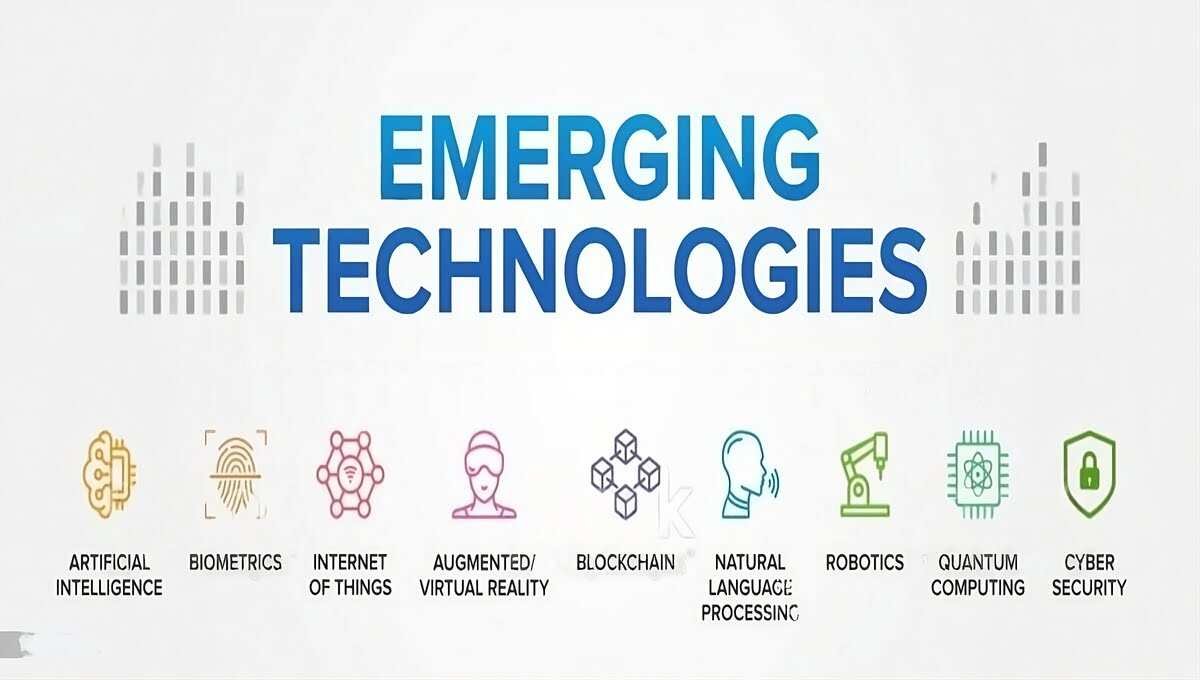
Introduction
As the world hurtles towards the year 2024, we find ourselves standing on the cusp of groundbreaking technological innovations that promise to reshape industries and the way we live. From artificial intelligence (AI) to quantum computing, the emerging technologies of 2023 are primed to revolutionize our lives in ways we could have only imagined before. In this article, we will explore the 19 most promising emerging technologies and provide links to resources where readers can delve deeper into each of these cutting-edge fields.
Artificial Intelligence: The Intelligent Revolution
Artificial intelligence (AI) is at the cutting edge of current innovation. Through its ability to simulate human intelligence, AI revolutionizes various sectors, from healthcare and finance to transportation and entertainment. Machine Learning, Deep Learning, and Neural Networks are LSI keywords.
AIs are learning from vast datasets and optimizing outcomes for real-world problems, propelling us toward an era of automation and intelligent decision-making.
Internet of Things (IoT): Connecting the Unconnected
The Internet of Things (IoT) seamlessly merges physical and digital realms, facilitating communication between devices. This interconnected network streamlines processes, enhancing efficiency and convenience. LSI Keywords: Smart Devices, Connectivity, IoT Ecosystem.
IoT’s transformative potential reaches into homes, industries, and smart cities, creating an unprecedented level of automation and data-driven insights.
Blockchain: Building Trust in a Decentralized World
Blockchain technology revolutionizes data storage and transactions through its decentralized and immutable nature. It ensures transparency, security, and trust in various applications, particularly in finance and supply chain management. LSI Keywords: Cryptocurrency, Smart Contracts, Distributed Ledger.
By removing intermediaries and ensuring tamper-proof records, blockchain paves the way for a trustless and efficient digital future.
Quantum Computing: Unleashing Exponential Processing Power
Quantum Computing pushes the boundaries of classical computing by leveraging quantum phenomena to perform complex calculations at an unimaginable speed. This breakthrough technology holds immense potential in solving previously insurmountable problems. LSI Keywords: Superposition, Entanglement, Quantum Bits.
Quantum computers can revolutionize cryptography, optimization, and scientific simulations, heralding a new era of computation.
5G Technology: Empowering a Hyperconnected World
The advent of 5G technology ushers in an era of ultra-fast, low-latency communication, transforming the way we interact with information and each other. LSI Keywords: Network Speed, IoT Connectivity, Enhanced Mobile Experience.
With increased data transfer rates and seamless connectivity, 5G enables a world of innovative applications, from augmented reality to remote surgery.
Nanotechnology: The Art of Manipulating the Minuscule
Nanotechnology deals with materials and devices on the nanoscale, unlocking a realm where atoms and molecules are harnessed to create groundbreaking advancements in medicine, electronics, and environmental sustainability. LSI Keywords: Nanomaterials, Nanomedicine, Nanoelectronics.
Nanotechnology enables us to engineer matter at the atomic level, leading to enhanced performance and novel applications.
Biotechnology: Shaping the Future of Life Sciences
Biotechnology harnesses biological systems and living organisms to develop products and technologies that advance healthcare, agriculture, and environmental conservation. LSI Keywords: Genetic Engineering, Biopharmaceuticals, Bioinformatics.
Biotechnology is transforming medicine, agriculture, and industry, promising a future of personalized treatments and sustainable practices.
Renewable Energy: Powering a Sustainable Planet
Renewable Energy sources, such as solar, wind, hydro, and geothermal, provide clean and sustainable alternatives to fossil fuels, reducing carbon emissions and mitigating climate change. LSI Keywords: Green Energy, Solar Power, Energy Transition.
As the world shifts toward renewable energy solutions, the potential for a greener and more sustainable future becomes attainable.
Autonomous Vehicles: Redefining Transportation
Autonomous vehicles are self-driving machines that leverage AI and sensor technologies to navigate without human intervention. LSI Keywords: Driverless Cars, Autonomous Drones, Mobility Revolution.
With the advent of autonomous vehicles, we envision a safer, more efficient transportation landscape, reshaping mobility as we know it.
Augmented Reality (AR) and Virtual Reality (VR): Blending Realities
AR and VR technologies blend the physical and digital worlds, offering immersive and interactive experiences in gaming, education, training, and entertainment. LSI Keywords: Mixed Reality, Immersive Technology, AR/VR Applications.
Augmented and Virtual Reality redefine the way we perceive reality, creating boundless opportunities for education, entertainment, and business.
3D Printing: Using Additive Manufacturing to Its Full Potential
3D Printing, or Additive Manufacturing, constructs objects layer by layer from digital models, revolutionizing prototyping, manufacturing, and personalized product development. LSI Keywords: Rapid Prototyping, 3D Printing Materials, Customized Production.
With 3D Printing, we witness the democratization of manufacturing, enabling innovative designs and reduced waste.
Biometrics: The Future of Identity Verification
Biometrics employs unique biological traits, such as fingerprints and facial recognition, for secure and seamless identity verification in various applications, from smartphones to border control. LSI Keywords: Biometric Authentication, Identity Management, Security.
Biometric technologies are shaping a future where our physical attributes become our keys, enhancing security and convenience.
Space Exploration: Journeying Beyond the Horizons
Space Exploration endeavors to explore the cosmos, uncovering mysteries of the universe, and paving the way for potential colonization of other celestial bodies. LSI Keywords: Space Missions, Astronauts, Interplanetary Travel.
Through ambitious space missions, humanity embarks on an awe-inspiring quest to understand our place in the cosmos.
Nanomedicine: Revolutionizing Healthcare at the Nanoscale
Nanomedicine employs nanotechnology to diagnose, treat, and prevent diseases at the molecular level, offering targeted and precise medical interventions. LSI Keywords: Theranostics, Nanoparticles, Precision Medicine.
Nanomedicine holds the promise of highly effective and personalized treatments, revolutionizing the future of healthcare.
Edge Computing: Bringing Intelligence to the Edge
Edge Computing brings data processing closer to the source of data generation, enhancing real-time capabilities and reducing latency for various applications, such as IoT and AI. LSI Keywords: Edge Devices, Fog Computing, Low Latency.
With edge computing, we unlock a world of responsive and decentralized data processing, powering the internet of the future.
Wearable Technology: Integrating Tech into Everyday Life
Wearable Technology encompasses devices that seamlessly integrate into our daily lives, enhancing health monitoring, fitness tracking, communication, and productivity. LSI Keywords: Smartwatches, Fitness Trackers, Wearable Sensors.
Wearable technology is empowering individuals to monitor and optimize their well-being, fostering a more connected and health-conscious society.
Clean Meat: Pioneering Sustainable Protein Production
Clean Meat, also known as cultured or lab-grown meat, offers a sustainable and ethical alternative to traditional livestock farming, reducing environmental impact and animal suffering. LSI Keywords: Cell-Based Meat, Cultured Meat Industry, Animal-Free Protein.
Clean Meat revolutionizes the food industry, promoting ethical and environmentally friendly protein sources.
Swarm Robotics: The Power of Collective Intelligence
Swarm Robotics emulates the behavior of social insect colonies to create decentralized systems of coordinated robots that work collectively to achieve complex tasks. LSI Keywords: Collective Robotics, Swarm Intelligence, Decentralized Systems.
Swarm Robotics opens new possibilities for disaster response, exploration, and efficient industrial processes.
Human-Machine Interaction: Bridging the Gap
Human-Machine Interaction (HMI) focuses on creating intuitive and natural ways for humans to interact with machines, enabling seamless integration into our daily lives. LSI Keywords: User Interface, Voice Assistants, Gesture Recognition.
HMI strives to create technology that understands and adapts to human behaviors and preferences.
Energy Storage: Empowering Sustainable Power Management
Energy Storage technologies play a critical role in storing excess renewable energy, ensuring a stable and resilient power supply for communities and industries. LSI Keywords: Battery Storage, Grid-Scale Energy Storage, Energy Resilience.
As renewable energy adoption grows, efficient energy storage becomes paramount for a sustainable and reliable power grid.
Drones: Redefining Possibilities in the Sky
Drones, or Unmanned Aerial Vehicles (UAVs), offer a wide range of applications, from aerial photography and surveillance to delivery services and environmental monitoring. LSI Keywords: Drone Technology, UAV Applications, Aerial Data Collection.
Drones are transforming industries and optimizing operations by providing cost-effective and efficient solutions.
Artificial Neural Networks: Emulating the Human Brain
Artificial Neural Networks (ANNs) mimic the human brain’s neural connections to process complex information, driving advancements in AI and machine learning. LSI Keywords: Neural Network Models, Deep Learning Algorithms, Cognitive Computing.
Conclusion
The year 2023 brings with it an exciting wave of emerging technologies that will redefine how we live, work, and explore the world. From the boundless possibilities of AI to the enigmatic realm of quantum computing, each technology promises to unlock new frontiers. Embracing these innovations responsibly will be the key to shaping a future that benefits humanity as a whole.
FAQs
Where can I find online courses to learn more about these emerging technologies?
Many e-learning platforms, like Coursera, Udemy, and edX, offer courses on these technologies.
How will emerging technologies impact job opportunities in the future?
While some jobs may be automated, emerging technologies will create new job roles and opportunities in various industries.
Are there any ethical concerns related to AI and robotics?
Yes, ethical considerations such as privacy, bias, and responsible AI usage are crucial aspects of AI and robotics development.
Which industry will benefit the most from nanotechnology advancements?
Nanotechnology has broad applications, but healthcare and electronics are among the industries that will see significant benefits.
Will space technology lead to human colonization of other planets?
Space technology may pave the way for future space exploration and potential colonization, but it’s a complex and long-term goal.
Tech
The Most Promising Technology Trends of 2024

It’s 2024 and the world is a very different place. Scientists, researchers, and innovators have made incredible discoveries that are transforming our lives in ways we never thought possible. From advances in medicine to new technologies that make life easier and more efficient, here are some of the most exciting discoveries of 2024 so far:
2024 some interesting technology
1. Autonomous Vehicles:
Autonomous vehicles have been around for several years but continue to evolve. In 2023, these self-driving cars can be found on roads all over the world as they become an increasingly popular form of transportation for people who want a convenient way to get from point A to point B without having to drive themselves or rely on public transit options like buses or trains.
2 . Artificial Intelligence (AI):
AI has come a long way since its inception decades ago and it continues to improve every day, largely due advancements in machine learning algorithms which allow computers “think” more like humans do when making decisions based on data inputs provided by users or other sources online, offline, etc. This technology is being used across many industries, such ashealthcare,e where it helps doctors diagnose illnesses quicker than ever before; finance where automated trading systems help traders make better investments; and education where AI tutors can provide personalized instruction tailored specifically for each student’s needs; manufacturingprocesses,s which use robots instead of human labor power; and much more!
3 . 3D Printing Technology:
3D printing has revolutionized how we create physical objects from digital designs – whether those designs are created by hand using CAD software programs or generated automatically through algorithms programmed into printers themselves! In addition, this technology also allows us to access materials not easily available otherwise because they’re expensive, rare, hard to find, etc. All you need is your design file!
4 . Renewable Energy Sources:
By now renewable energy sources such as solar panels, wind turbines & hydroelectric dams have become ubiquitous sights globally providing clean electricity & reducing dependence upon burning fossil fuels cfuels,g air pollution & global warming effects at a large scale. With technological advancements leading towards cost-effectivesolutions,s both residential homes & industrial complexes alike can benefit greatly from these green energy alternatives!
5 . Virtual Reality (VR):
VR headsets were once considered toys only accessible by hardcore gamers, but today they’re becoming ubiquitous tools used everywhere, -from classrooms teaching students about ancient history cultures& civilizations via interactive simulations; to medical professionals training surgeons virtually before performing real surgeries; to businesses conducting virtual
6 Space Exploration:
Astronauts aboard International Space Station (ISS) were able to explore further into space by visiting Mars’ moons Phobic & Deimos, which allowed them unprecedented access to Martian surface features like craters; volcanoes;valleys,s etc., allowing us better understand its past geological history too! Additionally, robotic probes sent out during 2023 also revealed interesting facts about other bodies within the solar system, like Jupiter’s icy moon Europa, which may also hold clues about potential life there as well…
7 Gene Editing Technology:
The gene-editing tool CRISPR-Cas9 was improved upon this year so it could be used even more accurately when targeting specific genes responsible for certain diseases/disorders – allowing researchers to selectively alter genetic material inside cells without causing any haelsewhere, r,e thereby potentially curing some incurable conditions once thought to impossible!
8 Quantum Computing:
Researchers have created powerful computers that use quantum mechanics principles instead of traditional ones, like logic gates or transistors, to process information faster than ever before—up to millions of times more quickly! This technology could revolutionize computing power across all sectors, including medicine research & development (R&D), financial services & banking operations, etc., making them much more efficient than before with no need for additional hardware resources required at all!
Frequently Asked Questions (FAQs)
How is technology changing the way we live and work?
Technology is changing the way we live and work in many ways. For example, AI is being used to automate tasks, VR and AR are being used for training and education, blockchain is being used to create secure and transparent transactions, and quantum computing is being used to develop new drugs and materials.
How can we prepare for the future of technology?
We can prepare for the future of technology by:
-Learning about new technologies
-Developing skills in areas that are likely to be in demand
-Being aware of the potential risks of new technologies
-Being critical consumers of technology
-Advocating for policies that protect our privacy and security
What does the future of technology look like?
The future of technology is full of possibilities. We can expect to see continued advances in AI, VR, AR, blockchain, quantum computing, 5G, edge computing, and the IoT. These technologies have the potential to transform our lives in ways that we can’t even imagine.What does the future of technology look like?
The future of technology is full of possibilities. We can expect to see continued advances in AI, VR, AR, blockchain, quantum computing, 5G, edge computing, and the IoT. These technologies have the potential to transform our lives in ways that we can’t even imagine.
Tech
How can AR VR and MR improve engineering instructions
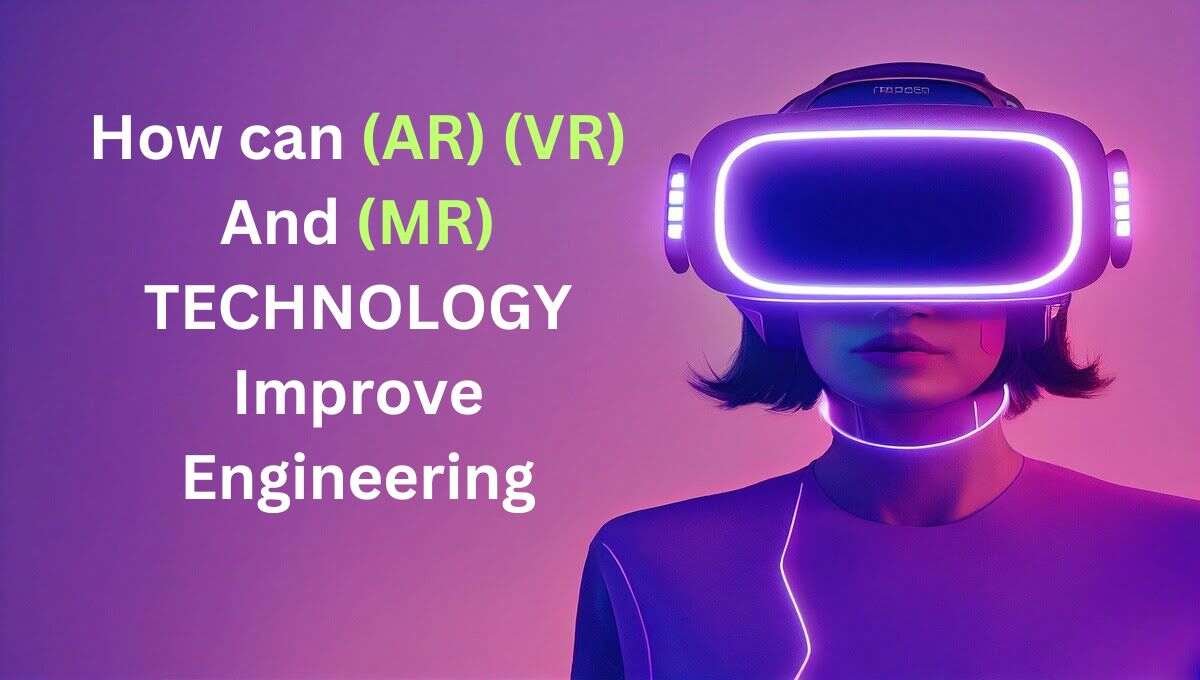
With the rapid advancements in technology, the fields of engineering and construction are being transformed in unimaginable ways. Augmented Reality (AR), Virtual Reality (VR), and Mixed Reality (MR) have emerged as revolutionary technologies that have the potential to revolutionize the engineering industry. In this article, we will explore How AR, VR, and MR are Revolutionizing Engineering. The various applications and benefits of AR, VR, and MR in engineering and how they can enhance efficiency, safety, collaboration, and overall project outcomes.
1. Introduction
Engineering projects often involve complex designs, intricate systems, and extensive planning. Traditional design, simulation, and collaboration methods have limitations in effectively communicating ideas and visualizing the final product. This is where AR, VR, and MR technologies provide immersive and interactive experiences that bridge the gap between the digital and physical worlds.
2. Understanding Augmented, Virtual, and Mixed Reality
Augmented Reality (AR):
Augmented reality (AR) overlays digital information on the real world. This can be done using a variety of devices, such as smartphones, tablets, and headsets. AR is often used to provide information about the real world, such as directions, translations, or product information. For example, you can use an AR app to see the name of a plant or the directions to a restaurant overlaid on your view of the real world.
Virtual reality
Virtual reality (VR) creates a completely immersive experience that completely blocks out the real world. This is done using a headset that displays a virtual world and tracks the user’s head movements. VR is often used for gaming, training, and entertainment. For example, you can use a VR headset to play a video game that allows you to explore a virtual world or to train for a job that requires you to operate machinery
Mixed reality
Mixed reality (MR) is a combination of AR and VR. It overlays digital information on the real world, but it also allows the user to interact with the virtual objects. This is done using a headset that displays a virtual world and tracks the user’s head and hand movements. MR is still in its early stages of development, but it has the potential to be used for a wide variety of applications, such as training, design, and manufacturing.
Here is a table summarizing the key differences between AR, VR, and MR:
| Feature | Augmented reality (AR) | Virtual reality (VR) | Mixed reality (MR) |
|---|---|---|---|
| Definition | Overlays digital information on the real world | Creates a completely immersive experience that blocks out the real world | Combines AR and VR by overlaying digital information on the real world and allowing the user to interact with the virtual objects |
| Devices | Smartphones, tablets, headsets | Headsets | Headsets |
| Applications | Navigation, education, gaming, marketing | Gaming, training, entertainment | Training, design, manufacturing |
3. Augmented Reality in Engineering

AR technology offers several applications that can significantly improve various aspects of engineering projects.
3.1. Training and Simulation
AR can be used to create realistic training simulations, allowing engineers to practice complex tasks in a controlled environment. For example, maintenance personnel can use AR headsets to overlay step-by-step instructions onto equipment, reducing errors and improving efficiency.
3.2. Design and Visualization
AR enables engineers to visualize 3D models and designs in the real world. By overlaying digital models onto physical environments, engineers can better assess spatial relationships, identify potential clashes, and make informed design decisions.
3.3. Maintenance and Repair
AR can assist engineers in the maintenance and repair of complex systems. AR enhances efficiency and accuracy by overlaying relevant information onto equipment, such as live sensor data or repair instructions, reducing downtime and costs.
4. virtual Reality in Engineering

VR technology provides immersive experiences that have significant implications for the engineering field.
4.1. Design and Prototyping
VR allows engineers to create virtual prototypes, enabling them to explore and evaluate designs before physical production. This iterative process helps identify design flaws, optimize performance, and save time and resources.
4.2. Collaboration and Communication
VR facilitates collaboration among geographically dispersed teams. Engineers can meet virtually in a shared virtual environment, visualize and manipulate 3D models together, and communicate effectively, regardless of physical location.
4.3. Training and Education
VR offers realistic training experiences for engineers, enabling them to learn and practice complex procedures in a safe and controlled environment. VR simulations can simulate hazardous scenarios or provide hands-on training for operating specialized equipment.
5. Mixed Reality in Engineering

MR combines the benefits of both AR and VR technologies, unlocking new possibilities in the engineering sector.
5.1. Enhanced Visualization and Interaction
MR allows engineers to overlay contextual information onto the real world, enhancing their understanding and interaction with physical objects. For example, architects can visualize building plans on-site, making real-time adjustments and improving design accuracy.
5.2. Remote Assistance and Support
MR enables remote collaboration and assistance for engineering projects. Experts can provide real-time guidance and support to field technicians using MR headsets, reducing travel costs and increasing efficiency
5.3. Field Operations and Maintenance
MR can improve field operations by overlaying real-time data and instructions onto the engineer’s field of view. This technology enables engineers to access critical information hands-free, increasing productivity and reducing errors.
6. Benefits of AR, VR, and MR in Engineering
Integrating AR, VR, and MR technologies in engineering projects brings numerous benefits to the industry.
6.1. Increased Efficiency and Accuracy
AR, VR, and MR technologies streamline processes, reduce errors, and increase efficiency. Engineers can make informed decisions and execute tasks more precisely by providing real-time information, visualizations, and simulations.
6.2. Enhanced Safety
AR, VR, and MR technologies can improve safety by simulating hazardous scenarios, conducting virtual safety training, and enabling remote assistance. Engineers can identify and mitigate risks before they occur, minimizing accidents and injuries.
6.3. Improved Collaboration
These technologies enhance collaboration by enabling real-time communication, visualization, and shared experiences among team members. Geographically dispersed teams can work together seamlessly, improving coordination and project outcomes.
6.4. Cost Savings
Using AR, VR, and MR technologies can result in cost savings throughout the project lifecycle. Engineers can minimize project delays and expenses by reducing rework, optimizing designs, and improving communication.
7. Challenges and Limitations
While AR, VR, and MR technologies hold immense potential, they also face specific challenges and limitations.
7.1. Technical Limitations
AR, VR, and MR technologies require robust hardware and software infrastructure to deliver optimal experiences. The quality of visuals, tracking accuracy, and device limitations can impact the user experience and adoption rate.
7.2. Cost and Implementation Challenges
Implementing AR, VR, and MR technologies can be costly, especially for small and medium-sized engineering firms. Initial investments in hardware, software, and training may pose financial challenges, limiting widespread adoption.
7.3. User Acceptance and Training
Integrating new technologies often requires a learning curve and changes in work practices. Engineers and workers may need training and support to adapt to the latest tools, affecting the pace of adoption and user acceptance.
8. Future Outlook
The future of AR, VR, and MR in engineering is promising. As technology advances, we can expect more sophisticated applications and improved accessibility. Integrating artificial intelligence and machine learning will further enhance these technologies’ capabilities, revolutionizing engineering practices.
Conclusion
AR, VR, and MR technologies can transform the engineering industry by improving efficiency, safety, collaboration, and project outcomes. From design and visualization to training and maintenance, these technologies offer numerous benefits that can revolutionize engineering practices. However, challenges such as cost, implementation, and user acceptance must be addressed for widespread adoption. The engineering sector should embrace these technologies and harness their transformative power as we move forward.
10. FAQs
A1. While the adoption of these technologies is growing, they have yet to be widely used across the entire engineering industry. However, many companies recognize their potential and gradually incorporate it into their workflows.
A2. These technologies enable remote collaboration by providing shared virtual environments where team members can visualize and manipulate 3D models. This facilitates effective communication and enhances collaboration, regardless of geographical distances.
A3. Yes, by improving efficiency, minimizing errors, and optimizing designs, these technologies can help reduce project costs. They enable better decision-making, reduce rework, and enhance communication, resulting in cost savings.
A4. Yes, there are limitations, such as technical requirements, initial implementation costs, and the need for user training and acceptance. These factors can impact the widespread adoption and implementation of these technologies.
A5. The future looks promising, with advancements in technology and increasing affordability. We can expect more sophisticated applications, improved user experiences, and further integration with artificial intelligence and machine learning, revolutionizing engineering practices.
VR in engineering mechanics
In this field, experts can create 3D models of industrial machinery and use virtual reality to identify and resolve technical problems. Additionally, a study demonstrated the potential of VR apps for teaching mechanical engineering.

 5G2 years ago
5G2 years agoHow 5G Technology Will Revolutionize Our Lives and Work

 Tech4 months ago
Tech4 months ago3d Printer Technology (Application) (History) And (Types)

 5G3 weeks ago
5G3 weeks agoWhat is the difference between 5G and 5G Plus?

 Computer1 year ago
Computer1 year ago“Bleeping Computer: Your Ultimate Guide to Cybersecurity”

 5G1 year ago
5G1 year agoDifference between 5G nsa and 5G sa

 Tech1 year ago
Tech1 year agoExplain How Technology Has Affected People’s Activity Levels

 5G1 year ago
5G1 year agoHow does 5g work on iPhone?

 cloud computing4 months ago
cloud computing4 months agoEdge Computing: Revolutionizing Data Processing and Analysis


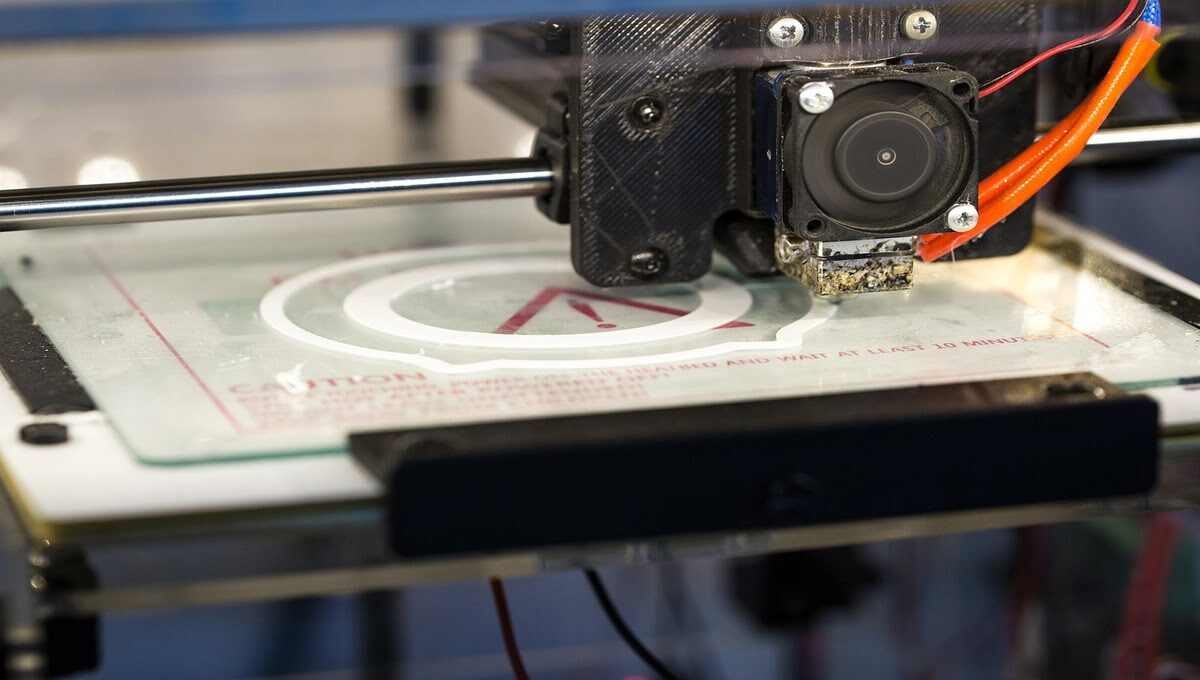




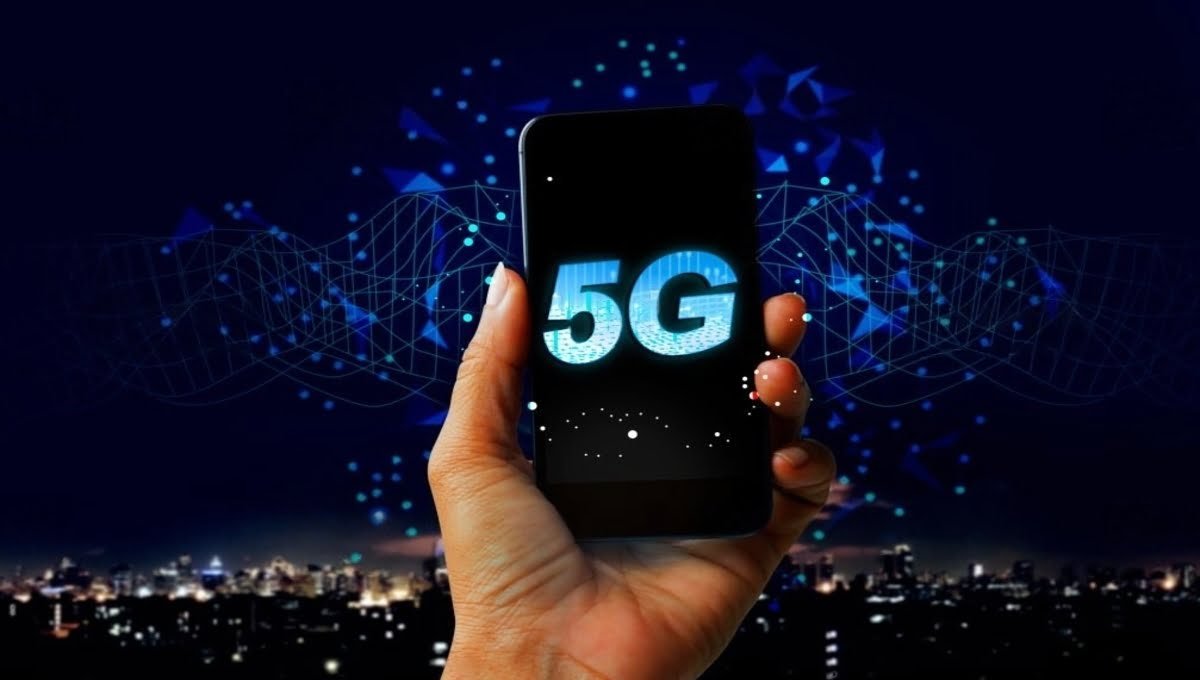
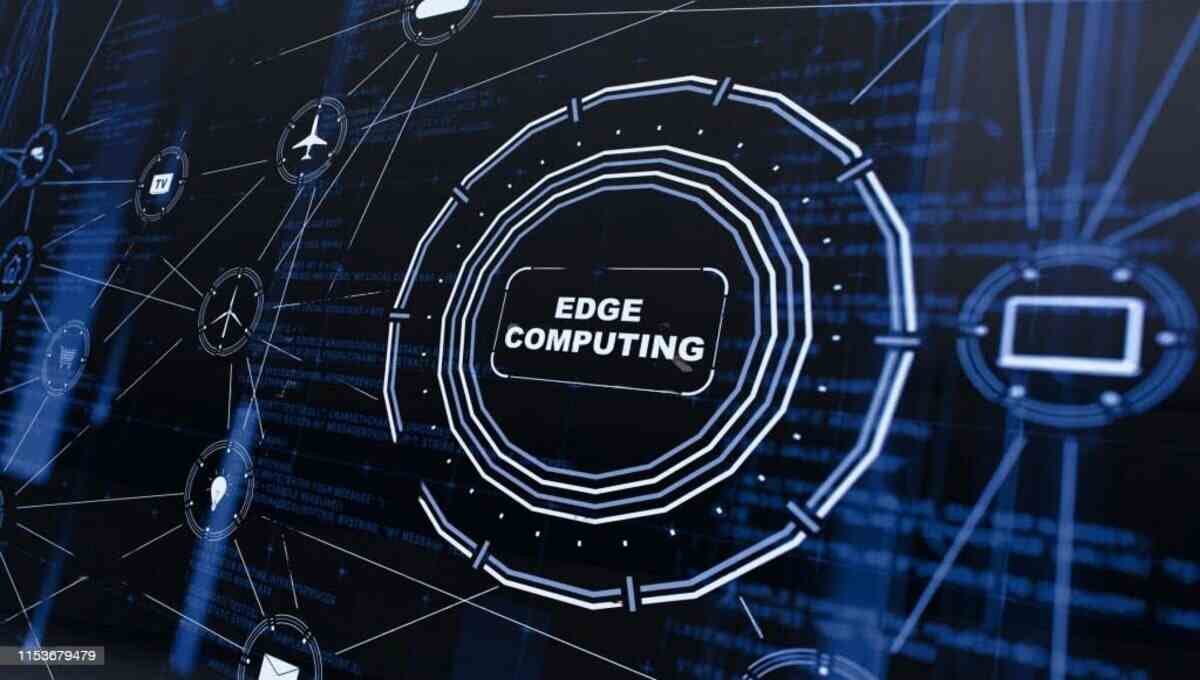
Puravive
January 8, 2024 at 5:52 am
I loved you better than you would ever be able to express here. The picture is beautiful, and your wording is elegant; nonetheless, you read it in a short amount of time. I believe that you ought to give it another shot in the near future. If you make sure that this trek is safe, I will most likely try to do that again and again.